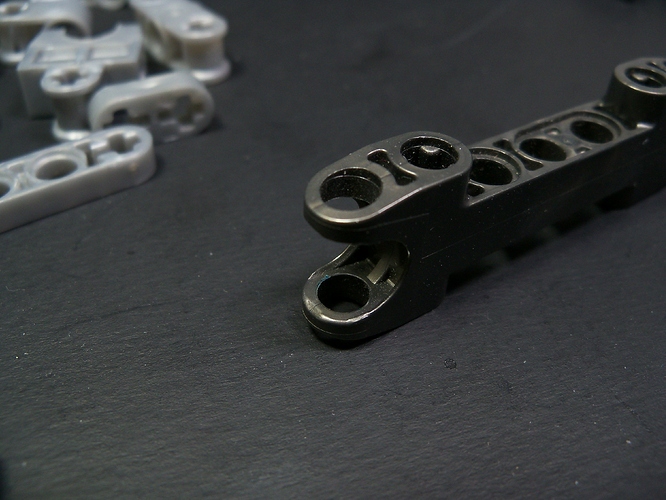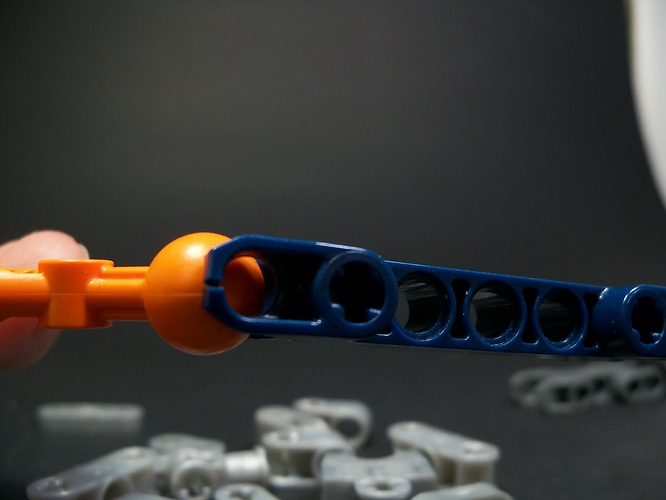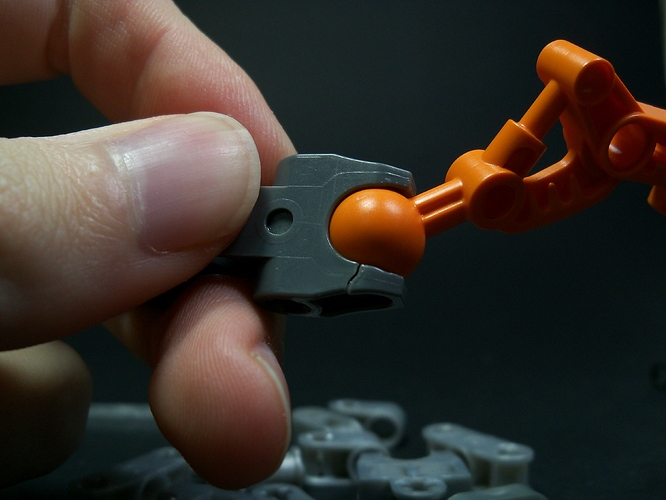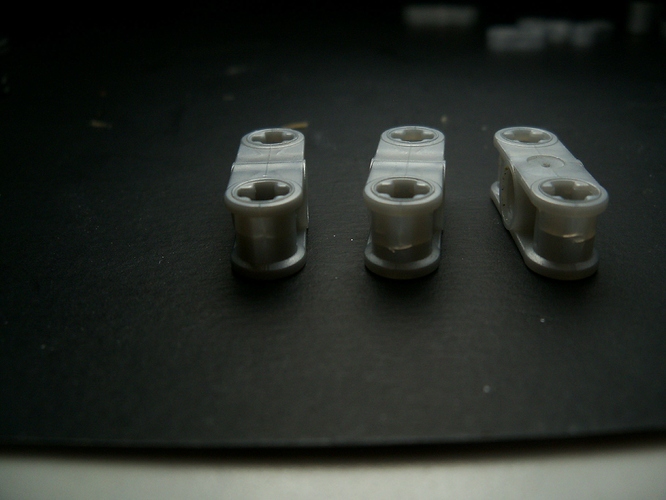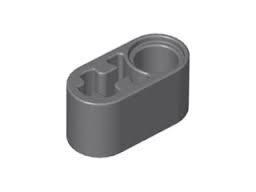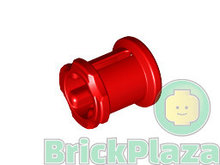All of us have had those rare moments where LEGO parts have broken on us. Many times we know that these parts have some fragile aspect to them, such as the thin ball sockets in the late years of Bionicle G1, or droid arms. Then there are parts that break in a way that doesn’t make sense. such as hairline fractures in odd places, or multiple cracks in perpendicular to each other. What could be the cause of these odd fractures?
The answer to this may be simply the way the plastic flowed when it was made.
The plastic injection process generally produces strong parts, at least if you use good quality plastic. Many causes of breaks are simply because of areas of more stress plus thinness at that area. But there are times where the way the plastic flows may determine where the part will break.
Plastic flows in from outside the mold through specific holes in the mold, and fills the molds from there. Where the plastic last touches itself may be a point of weakness, simply because it is not mixed fully with the opposite flow. You can see these joins in metallic Lego pieces. Here are some examples.
This is the most drastic one that I found in my collection. The stress on this type of part is not likely to cause any sort of breaking.
A gunmetal socket.
The meeting point of the plastic here just happens to be where this type of part breaks most often,and the thinnest point, but this part type can also break on a thicker part of the joint.
There is one thing that I noticed which helped fortify this Theory. Older silver parts are slightly translucent. Below I have several pictures of those parts. Where the ‘meeting’ points of those parts look similar to the points of their broken counterparts. Albeit more subtle, the connection is still there. Broken parts on the right, intact parts on the left.
I am not sure if more recent parts have the same cracking behavior. If anyone who has bought a recent technic connector has had it broken in these ways, could you please say below.
If this theory does turn out to be true, there isn’t much that can be done about it besides changing the molds to strengthen those areas or move where the injection points are.
Or maybe the LEGO group could simply keep the plastic molten for a few seconds longer in the mold to let the plastic better bond at these points.
Also, the fact that these ‘joints’ often occur in some of the thinnest places, on Technic parts at least, is not helping the breaking problem.
This is something that has been intriguing me for a while, and I finally got around to seeing if it could be possible. Turns out it might. This may be something I bring over to LEGO if it is not resolved already.

